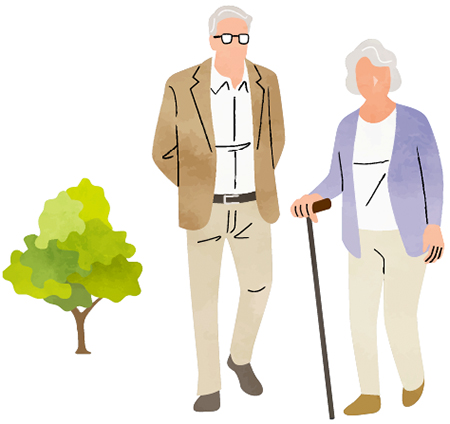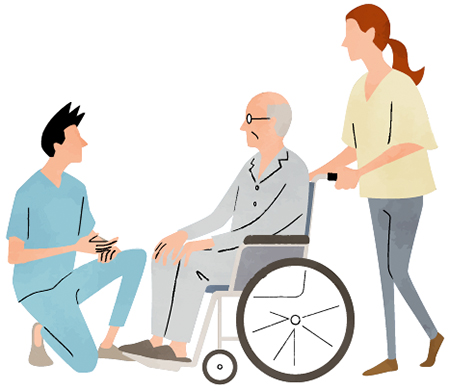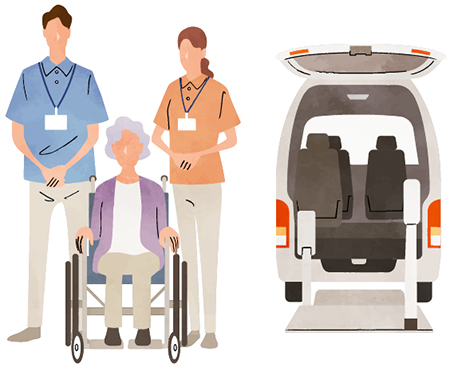Student pharmacists benefit from a curriculum that integrates components of geriatrics education and highlights the need for interprofessional collaboration when working with older patients.
By Jane E. Rooney

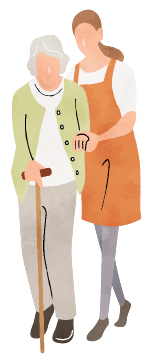 Growing older is complicated. No two people will age in the exact same way, from the physiological changes they experience to the types of comorbidities they have to the ways their bodies absorb medications. This makes geriatrics care particularly intricate to navigate and highlights pharmacists’ pivotal role in team-based care. It also means that geriatrics education must focus on ensuring that students understand the nuances regarding prescribing and medication safety for older adults.
Growing older is complicated. No two people will age in the exact same way, from the physiological changes they experience to the types of comorbidities they have to the ways their bodies absorb medications. This makes geriatrics care particularly intricate to navigate and highlights pharmacists’ pivotal role in team-based care. It also means that geriatrics education must focus on ensuring that students understand the nuances regarding prescribing and medication safety for older adults.
“Healthcare professionals working in geriatrics tend to be leaders in interprofessional collaboration because it’s so complicated. As you age you get more complex, you have more disease states and there are medication interactions to consider. Interprofessional collaboration is key,” explained Dr. Teresa DeLellis, chair, Department of Pharmacy Practice, Manchester University College of Pharmacy, Natural & Health Sciences. “Education starts with understanding what aging does physiologically to how the body handles medications. It requires knowing the pharmacology of each of these medications and the expected side effects, or knowing if the answer is not a medication.”
DeLellis is part of a team that is developing guidance for pharmacy programs regarding the concepts that every entry-level pharmacist should know about geriatrics. The team is also exploring best practices for teaching these topics in the most effective way. She and her colleagues are partnering with the American Society of Consultant Pharmacists, which has published a geriatric curriculum guide, as well AACP and some other American and Canadian pharmacy organizations to pull from their collective knowledge. “Unless you are in pediatrics, you are going to care for older adults,” she pointed out. “We are doing a literature review to see what pharmacists are doing in patient care right now, what are the pharmacy practice models and health outcomes associated with those. That will help us see what to prioritize in the Pharm.D. curriculum.”
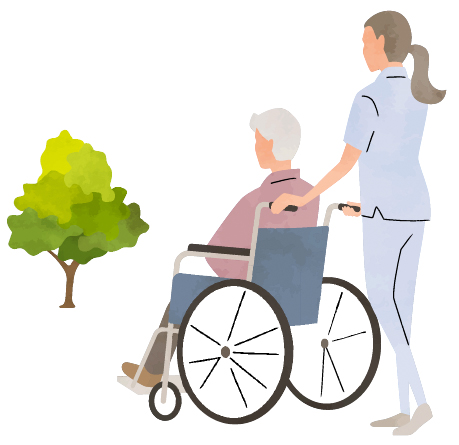
According to Census Bureau data, about one in six people in the United States were 65 or older in 2020—close to 17 percent of the population. That figure is expected to rise to 23 percent by 2050. A broader focus on geriatrics education in pharmacy can help students understand how physiology changes as people age, how response to medication changes and how best to communicate with older patients and their caregivers.
A Robust Curricular Commitment
The Virginia Commonwealth University (VCU) School of Pharmacy has made an intentional effort to keep geriatrics integrated in the curriculum so student pharmacists are exposed early and often to concepts related to caring for older adults. Students also have an option to pursue a Certificate in Aging Studies dual degree, thanks to a 30-year partnership with the Department of Gerontology. That commitment to geriatrics education recently earned the pharmacy school recognition from the Academy for Gerontology in Higher Education (AGHE) as a Program of Merit for Health Professions, making it the first Pharm.D. program in the country to receive the designation.
In addition to a geriatrics pharmacy elective and an APPE rotation in geriatrics, “one big thing we offer is a lot of opportunities for research and independent study with faculty,” said Dr. Emily Peron, associate professor. “We have five pharmacy faculty on board who are geriatrics trained. We offer projects for students who are interested in exploring the topic further. The gerontology faculty are instrumental. There’s a lot of overlap and collaboration with them.” She noted that the collaboration extends to several other schools within VCU.
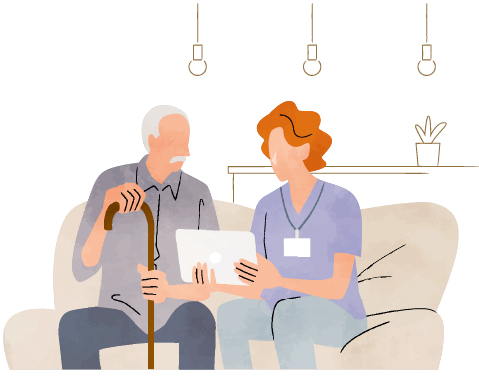
“We have a nursing faculty that we consider to be part of our team that is working on related issues, as well as folks from medicine, occupational therapy and physical therapy. There are interprofessional offerings and clinics where we all work together in the community, plus a virtual case that all medicine, nursing and pharmacy students complete that is teamwork-based,” Peron said. “We’re starting to see growth in terms of community engagement. We’re partnering with societies and student interest groups. Sharing responsibilities makes it a richer experience for everyone.”
Dr. Patty Slattum, interim associate dean for research and graduate studies, added that the program was able to flourish thanks to a dean in the 1990s who championed the idea of hiring faculty who specialized in geriatrics. “Having the leadership that says this is important and we’re going to build something with that, probably that is what got us to the place where we could get the recognition from AGHE,” she said. “You look across many courses, and the pieces that are important to the care of older adults are included, and people with geriatrics expertise are teaching them. These are things that help our graduates become better prepared to care for older adults with complex medication needs.”
VCU prioritizes interprofessional education, with three required IPE courses built into the pharmacy curriculum. “If students are in the community clinics where faculty work, they can do rotations and get hands-on experience working with older adults,” Peron noted. “It’s vitally important to our students to be able to work interprofessionally. The system does work better that way to care for older adults. Patients’ needs can vary significantly. There are lots of opportunities for healthcare professionals to identify different issues as they come up.”

Older adults tend to present many complexities as patients, so student pharmacists need to be prepared to take those into account when it comes to therapeutic decision making, Slattum noted. “We see older patients experiencing adverse social determinants of health. How is that playing into chronic conditions and things like payment for services? We want students to be able to deal with that complexity and be comfortable through that decision making,” she said. “We also want students thinking about how you deprescribe drugs. We have a much bigger focus on that in this population. There are complexities of settings where care is delivered. You are dealing with assisted living or a family caregiver environment, and so how do you work through those as a healthcare professional?”
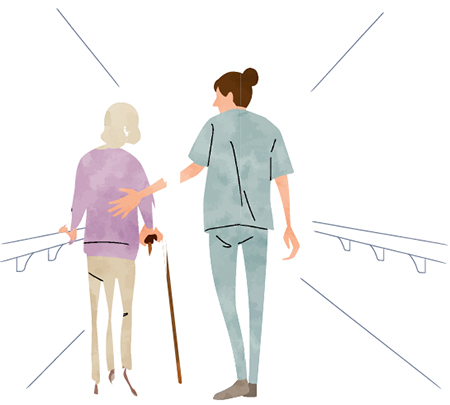
Peron added that the curriculum also encourages students to examine ageism in the healthcare system. “Pain gets overlooked in older adults,” she pointed out. “We tell students to look out for the phrase ‘what do you expect at this age?’ A big push we have is helping [future pharmacists] use terminology that’s appropriate and think more critically about choices they are making or whether they are making an assumption based on age. We want to ensure that we are doing what’s best for the individual patient. It’s not one size fits all. We want to dispel myths about aging and make working in geriatrics something that’s really making a difference.”
Slattum hopes to see more pharmacy schools pursue the AGHE designation and embrace working with this population. As Peron noted, “It may not seem like a sexy specialty, but there is so much value pharmacy can add to working with older adults. It’s a great opportunity for schools of pharmacy to identify areas of need. We need more healthcare professionals working in geriatrics. As people take more medications, pharmacists are going to be one of those groups that provide additional assistance in that realm.
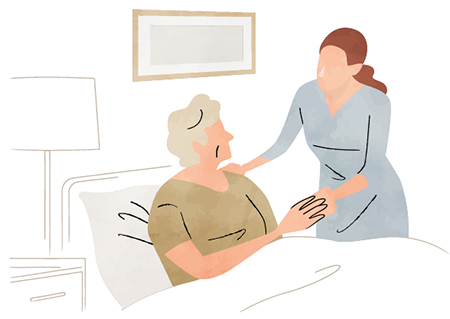
“There’s a fear of our own aging that can prevent us from looking at ways to make changes in care,” she continued, noting that she hopes other schools will consider expanding geriatrics opportunities. “The tenets of how we operate apply across the board. One special thing about geriatrics is that you are specializing in working with a population, but it allows you to work across many different practice settings. It’s a robust opportunity for pharmacists.”
Safety First
From Dr. Joseph Zorek’s perspective, integrating key concepts of geriatric pharmacotherapy throughout the pharmacy curriculum to weave in a deliberate focus on older adults would be ideal. Zorek, professor and executive director of Linking Interprofessional Networks for Collaboration at the University of Texas Health Science Center at San Antonio (UT Health San Antonio), teaches advanced pharmacotherapy to graduate nursing students and leads the university’s effort to advance IPE. “Older adults take lots of medications and have lots of comorbidities,” Zorek noted. “You would be hard-pressed to find an older adult who would not benefit from an interprofessional, team-based intervention.” The role of caregivers in this population adds another layer of complexity and challenge optimizing medication use. He added, “caregiving is really an ideal scenario to explore how important it is for different healthcare professionals to be working as a team.”
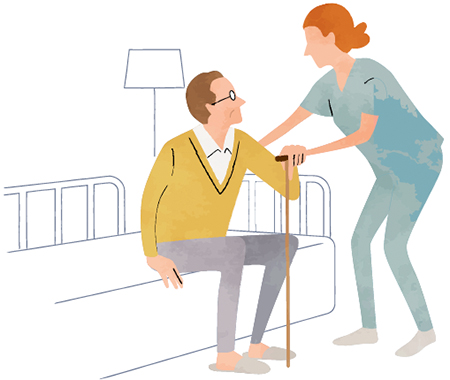


 “The days of practicing in a silo are pretty much over in the vast majority of pharmacy practice settings. You have to be knowledgeable about other professionals. You have to be an advocate for yourself within the healthcare team. Many of the most rewarding pharmacy practice ventures have interprofessional aspects to them.”
“The days of practicing in a silo are pretty much over in the vast majority of pharmacy practice settings. You have to be knowledgeable about other professionals. You have to be an advocate for yourself within the healthcare team. Many of the most rewarding pharmacy practice ventures have interprofessional aspects to them.”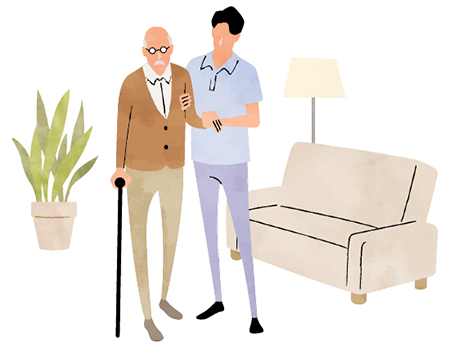
 “Education starts with understanding what aging does physiologically to how the body handles medications. It requires knowing the pharmacology of each of these medications and the expected side effects, or knowing if the answer is not a medication.”
“Education starts with understanding what aging does physiologically to how the body handles medications. It requires knowing the pharmacology of each of these medications and the expected side effects, or knowing if the answer is not a medication.”